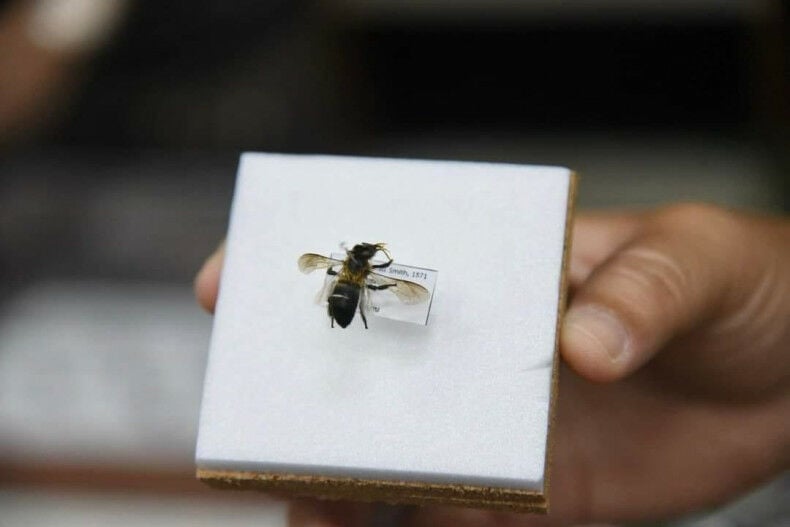Himalayan giant honey bees spotted in Chiang Mai

Himalayan giant honey bees have been spotted in Doi Pha Hom Pok National Park, Chiang Mai province, a first-time occurrence, evidencing that the nation’s ecological system is ideal for unique species.
The Department of National Parks, Wildlife and Plant Conservation, together with a team of biology researchers from Chulalongkorn University’s Faculty of Sciences, made the announcement yesterday.
The unexpected discovery took place last May. A group of biologists had been tracking the Kaiser-I-Hind, a scarce butterfly species previously sighted within the boundaries of Doi Pha Hom Pok National Park. During their exploration, they encountered a swarm of bees, distinguishable by their entirely black abdomen, golden yellow fur on the thorax, and muted wing colour. The team collected three specimens for comprehensive analysis.
Nattapot Warrit, a researcher from the team, highlighted that this find substantiates the existence of the rare species via DNA testing. This comes after a photograph, believed to be the first of the Himalayan giant honey bee in Thailand, was posted on the iNaturalist website in 2020.
Nattapot explained that these giant bees generally inhabit chilly landscapes at altitudes of 1,000 to over 4,500 metres, where temperatures are below 25 degrees celcius. Previous sightings have been recorded in China, Nepal, India, Myanmar, and Vietnam, but never in Thailand.
“This discovery proves that Thailand has a perfect ecological system for the cave bee. This pollinator plays a significant role in increasing the population of specific plants that grow in a low-temperature environment.”
About 95% of its hives are found in caves, earning it the moniker, cave bee. With individual colonies ranging from 50,000 to 100,000 bees, it is considered one of the most significant honey producers globally. Its presence is crucial in mountainous regions due to its ability to aid in plant territorial expansion.
Climate change
However, Warrit voiced concern over the potential impact of climate change on the giant bee population. Increasing temperatures could lead to a decline in their numbers.
“Our study found the giant bee migrates to Thailand in March and leaves in July. But if the temperatures on high mountains aren’t cold enough, they might not come back.”
The team discovered three hives within the national park and is optimistic about finding more in other national parks in Chiang Mai province and the northeastern region, reported Bangkok Post.
Department’s deputy chief, Songkiat Tatiyanond, hailed the discovery as a testament to the department’s successful efforts in preserving the forest’s delicate ecological system. He assured further support for the ongoing study of this rare bee species.
Latest Thailand News
Follow The Thaiger on Google News:


























